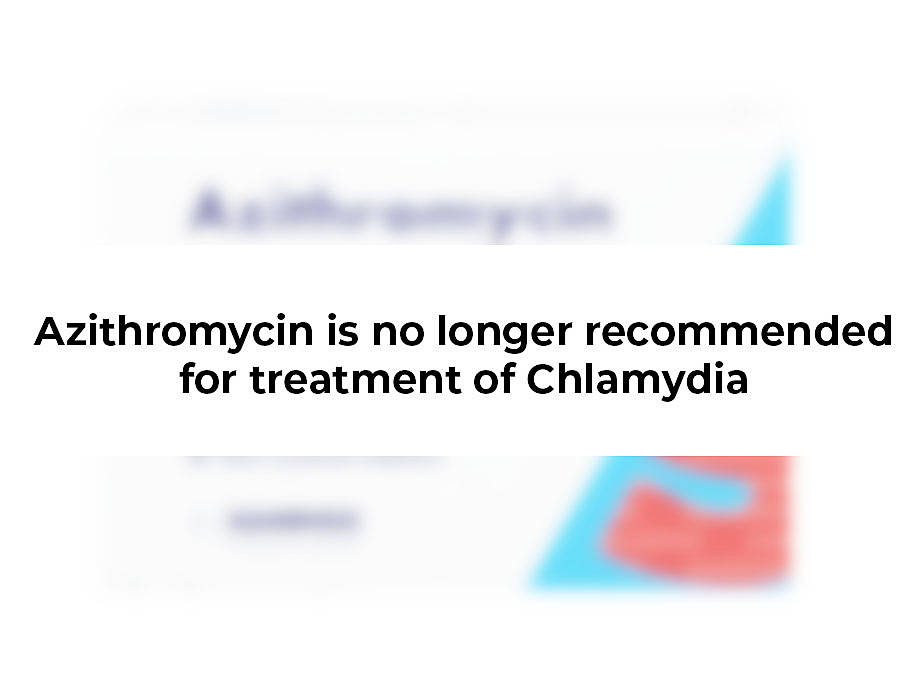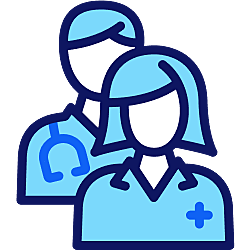Azithromycin (no longer available)
We no longer offer azithromycin to treat chlamydia. Continue reading to learn more about treatment.




Prices from £18.00
In stock. Simply fill in a brief consultation questionnaire and one of our doctors will review your request today.
-
The most recent medical guidelines from the British Association of Sexual Health and HIV (BASHH) no longer recommend azithromycin for the treatment of chlamydia.
We offer the top clinically recommended treatment for chlamydia, doxycline. You can request this online through us.



About azithromycin
Don't take with
Alcohol
Alcohol will neutralise any positive effects the drug has. This means your Chlamydia won’t be cured effectively.
Dosage
The most important point is to follow the instructions your doctor gives you when taking any medicine. Typically, a 3-day course ofAzithromycin is used to treat Chlamydia.
You should take Azithromycin one hour before a meal or two hours after a meal.
Common side effects
- Stomach cramps
- Feeling sick
- Diarrhoea
- Wind
-
-
Studies have shown increasing bacterial resistance to Azithromycin, so it has become less effective at treating chlamydia.
The British Association for Sexual Health and HIV have released new guidelines stating that only doxycycline is recommended as the first-line treatment-of-choice for chlamydia infections. You can request doxycycline through ZAVA.
-
-
Azithromycin is an antibiotic from the “macrolides” group.
-
-
Azithromycin is used to treat a lot of different bacterial infections such as chest, throat and nose infections (such as bronchitis, tonsillitis and pneumonia), ear infections and skin or soft tissue infections (such as abscesses).
Azithromycin was previously used as a very common treatment for chlamydia. However, the most recent guidelines advise that azithromycin shouldn’t be used to treat chlamydia, because of high rates of antibiotic resistance, and because it is not fully effective in treating all types of chlamydia.
-
-
Your GP or sexual health clinic may prescribe azithromycin for you if you have chlamydia and are unable to take doxycycline. This may be the case if you are pregnant or if you are allergic to doxycycline.
-
-
Yes. Azithromycin is a prescription medication so you need an assessment from a doctor before you start treatment.
-
-
The active ingredient is the azithromycin. Each tablet will contain 250mg of this. Other ingredients include lactose, magnesium stearate, maize starch, sodium lauryl sulphate, gelatin, iron oxide (black) E172, shellac, propylene glycol, sulphur dioxide and titanium dioxide. If you are allergic to any of these ingredients, you must not take Azithromycin.
-
-
If you get any of the following serious side effects, you must seek medical assistance immediately:
- Allergic reaction (swollen face, eyelids or lips, rash, itching, wheeziness)
- Severe long-lasting diarrhoea, particularly if blood has mucus in it (this may mean you have serious bowel inflammation)
- Severe skin rash or flaking
- Rapid/irregular heartbeat
- Low blood pressure (feeling faint/dizzy)
-
-
- Dizziness
- Headache
- Numbness/pins and needles
- Vomiting and indigestion
- Loss of appetite
- Visual disturbance and deafness
- Skin rash/itching
- Joint pain
- Low lymphocyte count (a type of white blood cell)
- Low blood bicarbonate levels
- Tiredness/ weakness
-
-
- Thrush
- Allergic reactions
- Blistering of genitals, mouth, eyes and skin
- Anxiety
- Skin more sensitive to sunlight
- Reduced sense of touch
- Sleepiness
- Insomnia
- Ringing of the ears
- Heart palpitations
- Chest pain
- Constipation or stomach pain
- Inflammation of the liver
- Loss of strength
- Swelling
- Rare side effects that can occur in under 0.1% of patients are:
- Agitation
- Vertigo
- Changes in liver function
Side effects which are exceptionally rare and have only been reported in a few cases include fits, feeling hyperactive, muscle weakness, tongue discolouration, pancreatitis, kidney inflammation, jaundice (yellowing of the skin), bruising or prolonged bleeding after injury.
If you notice any of the side effects above, or any changes which have occurred after treatment, inform your doctor right away. Similarly, you should not take any medicines to relieve your side effects, such as diarrhoea, without consulting your doctor first.
-
-
You must not take azithromycin if you're:
- allergic to any of the ingredients in the Azithromycin tablets, or if you are allergic to any other macrolide antibiotic
- taking any medicines derived from ergot, such as ergotamine which is used to treat migraines
You should not take azithromycin without talking to your doctor first if you’re:
- pregnant
- trying to get pregnant
- breastfeeding
You should tell your doctor if you have any of the following conditions:
- Kidney problems
- Heart conditions
- Liver problems
Tell your doctor if you are taking any of the following medicines:
- Warfarin/ other medicines to prevent blood clots
- Ciclosporin (suppresses immune system to prevent rejection after transplant)
- Antacids (for indigestion)
- Digoxin (for heart failure)
- Terfenadine (for hay fever or skin allergy)
The tablets will contain lactose. If you are lactose intolerance, do not take the medication without speaking to your doctor first. The sulphur dioxide in rare cases can cause allergic reactions and wheezing.
Azithromycin will not affect your ability to drive or use machines. However, if you think you feel unwell after taking the medication, do not put yourself and others at risk.

Dr Kathryn Basford is a qualified GP who works as a GP in London, as well as with ZAVA. She graduated from the University of Manchester and completed her GP training through Whipps Cross Hospital in London.
Meet our doctorsLast reviewed: 01 May 2019
-
Management of travellers’ diarrhoea, BMJ [accessed February 2023]
-
Travellers' Diarrhoea, fitfortravel [accessed February 2023]
-
Antibiotic Therapy for Acute Watery Diarrhea and Dysentery, Military medicine [accessed February 2023]
-
Side effects of azithromycin, National Health Service [accessed February 2023]
-
Azithromycin, NICE/British National Formulary [accessed February 2023]








